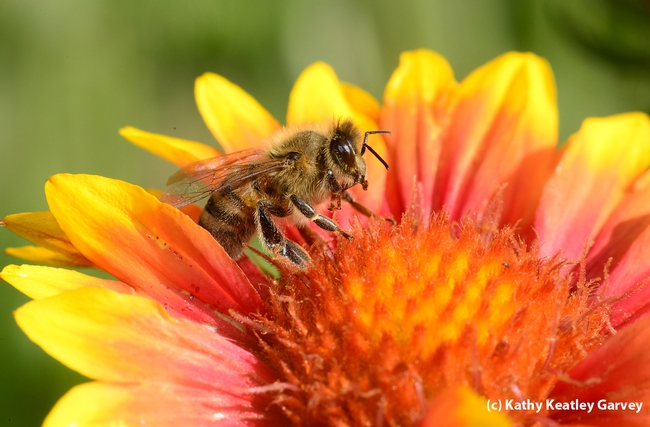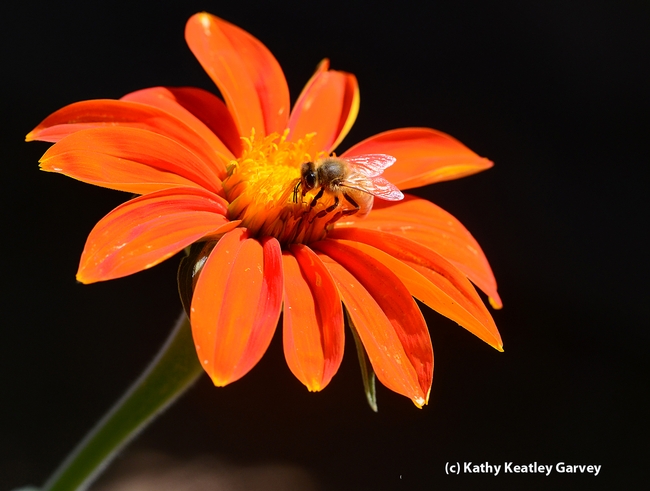Honey bees on blanket flowers (Gaillardia).
Honey bees on Mexican sunflowers (Tithonia).
The Girls of Autumn....not unlike The Boys of Summer...
Extension apiculturist Eric Mussen of the UC Davis Department of Entomology, emphasizes that backyard gardeners should plant bee friendly flowers for all the seasons.
'Limited plantings of backyard, or even acres, of flowers will greatly improve the possibility of enhancing the native bee population in the area," Mussen says. "However, each honey bee colony requires an acre equivalent of forage on a daily basis, all during its active season. This seems to be pretty hard to accomplish, but honey bees will fly up to four miles from the hive in any compass direction to get food. That is an area of 50 square miles in which to find that acre equivalent."
G. H. Vansell, author of the University of California's treasured 1941 bulletin, "Nectar and Pollen Plants of California," writes that "six of the most important sources of nectar in California are the sages, alfalfa, orange, wild buckwheats, star thistle and Christmas berry; of these, the sages, wild buckwheats and Christmas berry are native." (Read this book online in openlibrary.org.)
Native pollinator specialist Robbin Thorp, emeritus professor of entomology at UC Davis, has singled out some of the best native plants for bees. The information, gleaned his own experience and from Vansell's list, appears on the website of the Harry H. Laidlaw Jr. Honey Bee Research Facility, UC Davis.
And if you want to look up individual plants, Thorp urges you to access Calflora (UC Berkeley).
Good advice and a good way to help the bees!
Attached Images:

